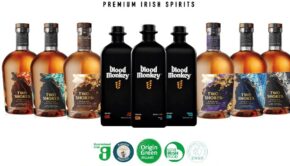Mixed prospects for wine trade

There are few certainties in the wine market in 2010, save from more wine being sold at the cheaper end, and premium wines continuing under pressure.
18 February 2010
2010 will be a tough year but who will find it toughest and who will best survive? There are few certainties, save that everyone will sell less wine than they did a couple of years ago. More wine will be sold at the cheaper end and premium wines will continue under pressure.
One certainty is that predictions will be foolhardy. Nevertheless, here are my personal ones for 2010. I suspect that growth in the rosé market will flatten out. I believe that demand for mid market pinot noir will grow, especially the easy, summer fruit styles favoured by Chile, less expensive areas of California, New Zealand and, increasingly, Australia. Aromatic whites other than sauvignon blanc will see some growth, while chardonnay will see a strong recovery in popularity.
Organic wines will be less favoured, partly due to growing scepticism about global warming. Only where they compete with regular wines on cost will they hold their own; that could be hard on some organic producers because, even if global warming isn’t happening, sustainable use of water and soil is still vital.
Trophy wines: those rich, high-alcohol special labels aimed at the €40 plus market will see a fall in demand. A number of producers in Spain, Portugal and Italy who have applied over-ambitious pricing to mid market wines will have to look at their price quality-ratio and some prices should fall in this sector.
South Africa should have growth on the back of the World Cup but needs to promote carefully in order to see the full benefit. Sparkling wine from Spain and Italy will continue to grow strongly, driven by improved quality and keen pricing – prosécco sales rose by 50% in the UK last Christmas. Australian sparklers continue to improve their character without breaking the bank and must do well. France will continue to be under pressure but will probably hold its own. This year’s Bordeaux en primeur campaign is likely to see a strong Chinese presence, which will partially counter the fall in British and American demand. Prices won’t reach the heights of the noughties but may not fall as much as some pundits predict.
Wine sales in India, China and Japan will continue to grow, but a lot of that wine will be local and foreign producers won’t benefit as much as they hope. India and China now have substantial vineyard areas and Japan is catching up. There are now almost 100 wineries in the region around Mt Fuji alone.
Sweet wines and sherries have struggled to hold market share in recent years and that won’t change in 2010. Port, however, seems set for some growth. 2007 was a declared year for vintage port and sales have exceeded expectations. There was evidence of more consumer interest in the product during 2009 and awareness that Reserve and LBV categories are very good value for money.
The icy weather of early 2010 saw local shops, including off-licences, experiencing a rise in customer numbers. Wouldn’t it be nice to think that this would continue? Hopefully, now that consumers have seen the range and quality that local stores offer, they will continue to make more purchases from these outlets.



 Print
Print






Fans 0
Followers